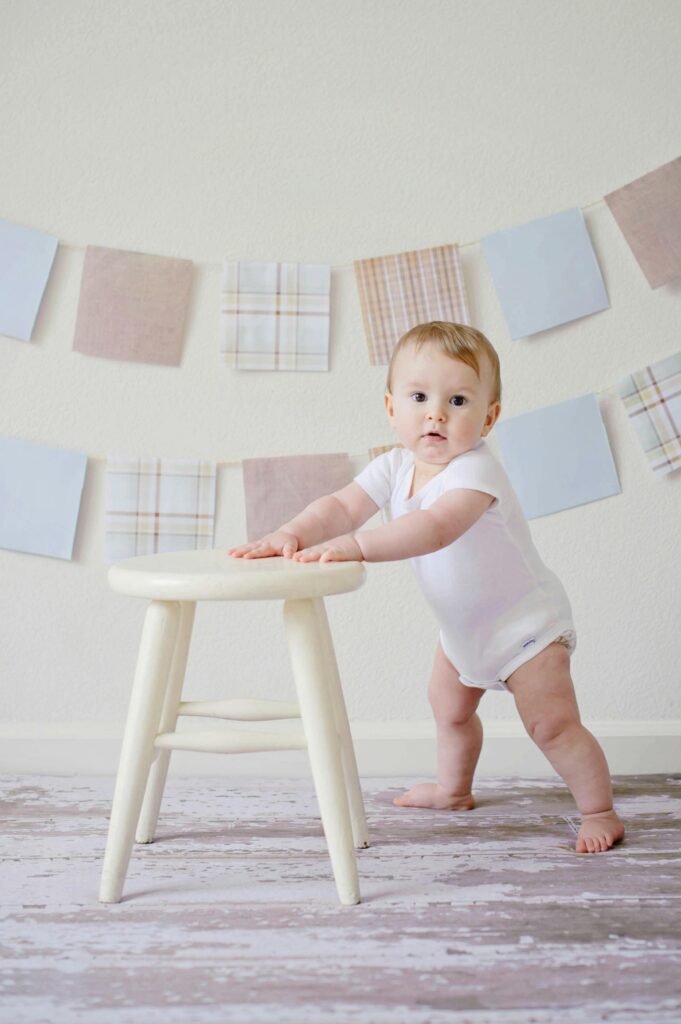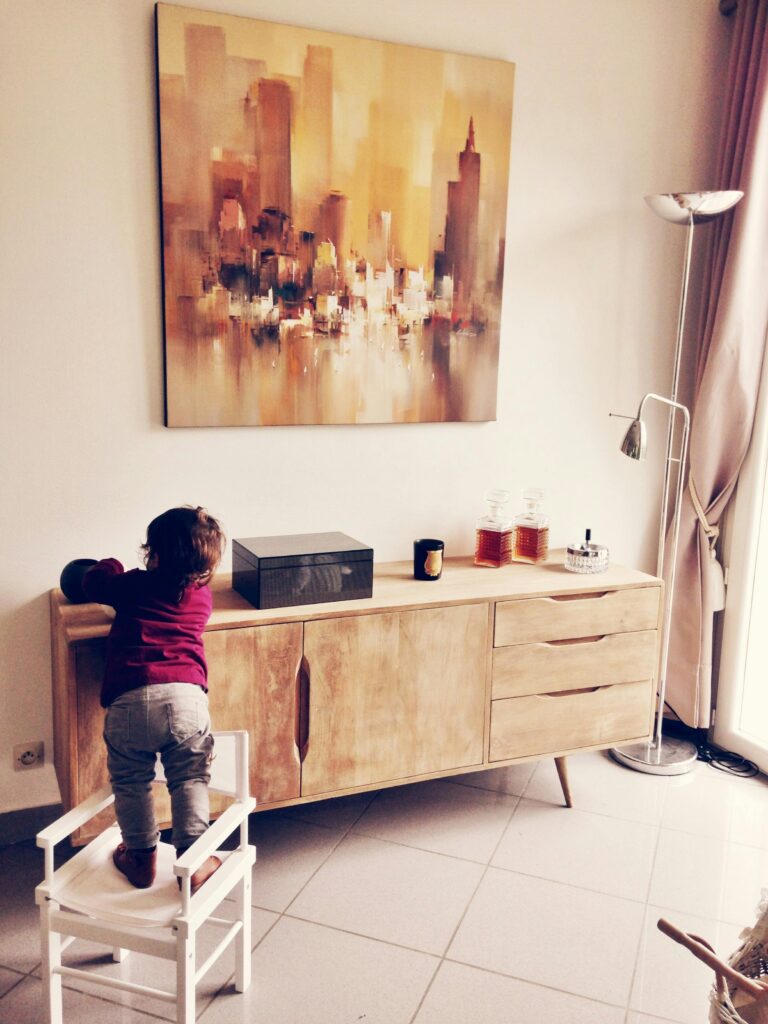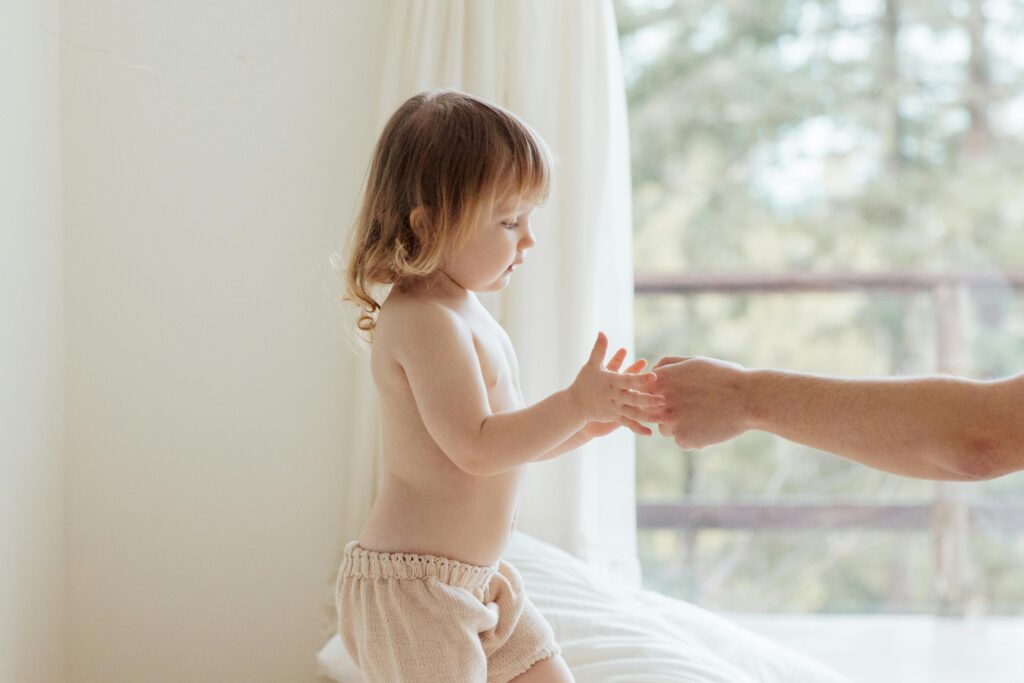Looking to learn about baby proofing cabinets? You have come to the right place! Expectant parents might look around their house and feel completely overwhelmed at the changes that should be made to keep a baby safe. First-time parents might wonder — do I have to babysit at home?
The answer is yes; a home should be babyproofed before a little one’s arrival.
Table of Contents
What Is Baby Proofing?
Having a baby or little children at home can be a lot of pleasure. But once your child walks about, you can find more safety hazards than you previously realized. Even though many risks and dangers in your home, such as a hot stove, sharp objects, or unstable furniture, may be simple for adults to handle, your little explorer won’t be able to identify these as dangerous. Therefore, the secret to effectively baby proofing cabinets and child proofing your home is to detect potential safety threats and provide a safe environment for your child.
When to Babyproof Your Home

It’s crucial to keep an eye on your infant from the beginning to make sure they’re secure and content. Every stage of your child’s development—from infancy to toddlerhood and childhood—brings unique obstacles and opportunities! Therefore, knowing what baby- or childproofing steps to take at each stage is vital.
Do you know when your baby should start having your house childproofed? While some parents begin during pregnancy, others do not start until after the baby is delivered. Instead of putting off the procedure, start it early. While your child begins to crawl and move around on their own, you will need to take extra precautions while handling potentially dangerous items and areas because, to them, your entire home appears to be a playground!
Before your baby ventures outside, get ready by baby proofing cabinets and the rest of your home. A smart strategy is to crawl about on the floor at your baby’s level to observe what they perceive and what might be dangerous. Additionally, as your child grows more prominent and more active, attempt to predict where their curiosity and reach might lead them.
How to Babyproof Your House

- You’ll need to childproof your house room by room if you have a curious, active infant so they may explore their environment without risk. The following are some suggestions and ideas for baby proofing cabinets and any of the house’s rooms:
- Put in carbon monoxide and smoke detectors. Installing these detectors throughout your home will help keep you and your family members safe from carbon monoxide and fire. Remember to inspect these gadgets once a month and replace the batteries as necessary.
- Cover the outlets with a cover. Children often jammed Little fingers and toys into any available tiny place. Cover your electrical outlets to help avoid this and bypass them. Electrical cords should also be kept hidden.
- Put in baby safety gates. Safety gates are handy once your baby begins to crawl, especially for baby proofing stairs. A safety gate should be installed at both the top and bottom. Furthermore, baby gates are handy for staircases and dividing off spaces like the kitchen, laundry room, and garage you don’t want your child to enter.
- Safely store furniture. Verify that all furniture and sizable household appliances, such as televisions, cabinets, bookshelves, and lights, are stable and cannot be dragged over. Heavy furniture can be mounted and fastened to the wall.
- Avoid slipping. Consider carpeting your stairwells and slippery flooring. Additionally, it would help if you watched out that your youngster does not run or walk on them while wearing socks.
- Eliminate any choking dangers. Always watch for small objects a young child might try to put in their mouth by looking around your home, especially on the floor.
- Keep batteries out of sight. As with other small things, children may try to put the tiny coin or button batteries in many everyday electronics and objects—from toys and TV remotes to automobile key fobs and calculators—into their mouths. Batteries, however, are unique in that they pose a choking hazard and produce an electrical current that can burn bodily tissues when they come into contact with saliva. Thus, ingesting a battery can potentially seriously harm the organs’ lining. Securely dispose of old batteries, store all batteries and small battery-powered objects out of reach, and close the battery compartments on all battery-containing gadgets.
What Are 10 Safety Tips For Baby Proofing Your Home?
The ten safety suggestions listed below may help you babyproof your house:
- Put in place baby safety gates
- Fasten bulky furniture to walls with wall mounts.
- Make sure the crib for your child complies with safety regulations.
- Put safety locks in place.
- Make use of cordless window coverings.
- Eliminate any potential choking hazards.
- Cover the outputs of electricity
- Unplug any appliances.
- Put a lock on the toilet cover.
- Attach corner guards to the edges of tables.
When Can You Stop Baby Proofing?

Your child will need different kinds of supervision and childproofing techniques at every stage of childhood. As your child gets older, explaining rules to them becomes more straightforward. Still, they also have more significant potential, fantastic imagination, and curiosity. Hence, you can assist in preventing accidents at home by being prepared and going over potential hazards with your child as they get older and more prominent.
Remember:
Children carry varying degrees of activity, knowledge, and adventure at every developmental stage, from infancy to early adolescence. And the most important thing is to keep your child safe. Because of this, baby proofing cabinets or childproofing your home is essential to reducing the risk of accidents. Using gates on stairs, locking or latching cabinets and drawers containing dangerous items, covering all electrical outlets, mounting large, unstable furniture to the walls, and so on are just a few of the essential baby proofing suggestions we have included to help you along the way. It’s equally critical to consider your child’s safety when not at home. It would help if you also read up on toddler bike safety to keep your child safe even when out and about. We hope our practical baby proofing and parenting advice makes your path through parenthood easier.
Baby Proofing Cabinets Made Easy

It might take a lot of time and effort to babysit your home, but it’s crucial for your child’s safety. According to Scott, “One of the biggest tragedies in pediatrics is that accidents rank among the top causes of death for kids under nine.” Most accidents are preventable and unintended. Since the focus of pediatrics is prevention, we strongly advocate childproofing. Divide the process of baby proofing into little, doable tasks that you, your partner, and other knowledgeable loved ones may complete jointly to provide yourself ample time (and peace of mind!). Additionally, please do not hesitate to contact your pediatrician with any questions or concerns regarding baby safety.


